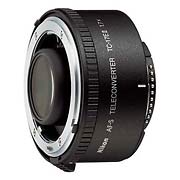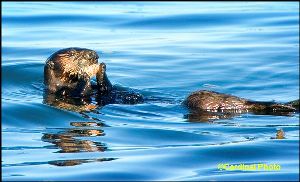- Photo Safaris
- Alaska Bears & Puffins World's best Alaskan Coastal Brown Bear photo experience. Small group size, idyllic location, deluxe lodging, and Puffins!
- Participant Guestbook & Testimonials Candid Feedback from our participants over the years from our photo safaris, tours and workshops. We don't think there is any better way to evaluate a possible trip or workshop than to find out what others thought.
- Custom Photo Tours, Safaris and Personal Instruction Over the years we've found that many of our clients & friends want to participate in one of our trips but the dates we've scheduled just don't work for them or they'd like a customized trip for their family or friends.
- Myanmar (Burma) Photo Tour Myanmar (Burma) Photo Tour December 2017 -- with Angkor Wat option
- Reviews Go hands-on
- Camera Reviews Hands-on with our favorite cameras
- Lens reviews Lenses tested
- Photo Accessories Reviews Reviews of useful Photo and Camera Accessories of interest to our readers
- Useful Tools & Gadgets Handy tools and gadgets we've found useful or essential in our work and want to share with you.
- What's In My Camera Bag The gear David Cardinal shoots with in the field and recommends, including bags and tools, and why
- Articles About photography
- Getting Started Some photography basics
- Travel photography lesson 1: Learning your camera Top skills you should learn before heading off on a trip
- Choosing a Colorspace Picking the right colorspace is essential for a proper workflow. We walk you through your options.
- Understanding Dynamic Range Understanding Dynamic Range
- Landscape Photography Tips from Yosemite Landscape Photography, It's All About Contrast
- Introduction to Shooting Raw Introduction to Raw Files and Raw Conversion by Dave Ryan
- Using Curves by Mike Russell Using Curves
- Copyright Registration Made Easy Copyright Registration Made Easy
- Guide to Image Resizing A Photographers' Guide to Image Resizing
- CCD Cleaning by Moose Peterson CCD Cleaning by Moose Peterson
- Profiling Your Printer Profiling Your Printer
- White Balance by Moose Peterson White Balance -- Are You RGB Savvy by Moose Peterson
- Photo Tips and Techniques Quick tips and pro tricks and techniques to rapidly improve your photography
- News Photo industry and related news and reviews from around the Internet, including from dpreview and CNET
- Getting Started Some photography basics
- Resources On the web
- My Camera Bag--What I Shoot With and Why The photo gear, travel equipment, clothing, bags and accessories that I shoot with and use and why.
- Datacolor Experts Blog Color gurus, including our own David Cardinal
- Amazon Affiliate Purchases made through this link help support our site and cost you absolutely nothing. Give it a try!
- Forums User to user
- Think Tank Photo Bags Intelligently designed photo bags that I love & rely on!
- Rent Lenses & Cameras Borrowlenses does a great job of providing timely services at a great price.
- Travel Insurance With the high cost of trips and possibility of medical issues abroad trip insurance is a must for peace of mind for overseas trips in particular.
- Moose Peterson's Site There isn't much that Moose doesn't know about nature and wildlife photography. You can't learn from anyone better.
- Journeys Unforgettable Africa Journeys Unforgettable -- Awesome African safari organizers. Let them know we sent you!
- Agoda International discounted hotel booking through Agoda
- Cardinal Photo Products on Zazzle A fun selection of great gift products made from a few of our favorite images.
- David Tobie's Gallery Innovative & creative art from the guy who knows more about color than nearly anyone else
- Galleries Our favorite images
DPS 2-29: Road Tools (Gift Ideas) and 2005 Events
DigitalPro Shooter Volume 2, Issue 29, November 22nd, 2004
PocketPC w. GPS & Almanac:
Entertainment--
I enjoy listenting to local radio to get a flavor for whereever I'm traveling. But some places really just don't have much reception or much choice in radio stations. So I've started downloading audio books (from audible.com) onto my PocketPC and listening to them through the rental car radio using a portable FM transmitter that plugs into the earphone plug of the PDA. Frankly it bothers me how much they charge for an audio book, since in effect I'm really just "renting" it and don't wind up with a permanent tangible copy, but for now it seems to be the only game in town. The other problem is that the rights management/activation system is time-consuming and has many pitfalls. I suspect that if this medium really catches on it will be greatly streamlined. Many libraries will rent them on CD which is certainly a more practical alternative.
Now there is an inexpensive and mostly effective work-around. There are now TSA Approved Travel Security Locks (denoted by a little red logo) for use on checked baggage because they have the tool to open them if needed. I have used these locks successfully in 8 different US airports ranging from large to small. However, not every airport has the tool. Homer, Alaska, for example, was still without it. At airports without the tool they will often inspect your bags in front of you and let you re-lock them. The only downside to using the locks is that they may be cut off if your baggage goes through an airport without the tool. Since they only cost $12-$15 that isn't too much to pay for security the rest of the time. Some of the newer versions even change color to let you know when the TSA tool has been used to open the lock.
 and add a USB 2.0 enclosure ($29 at Fry's or from an online discounter) which will give you plenty of room to backup your laptop. I actually carry 2 spare drives. One, a 60GB drive, is a complete clone of my laptop drive that I update before every trip using Norton Ghost 9. The other, which happens to be older and smaller, carries a compressed backup of all my files (also using Ghost 9) that I can use to restore to my system drive if needed. When I'm finished with my trip I then make an incremental backup of my image files onto that same drive, so that my images are in two places for the trip home. Then I'm protected if my system becomes non-bootable (I can recover from the compressed image) or if I lose files (I have a backup) or if my drive crashes (I can use the cloned drive). Remember if you do this to take a recovery CD with you to use to restore the backup, and any tools and instructions you need to swap out your laptop drive.
and add a USB 2.0 enclosure ($29 at Fry's or from an online discounter) which will give you plenty of room to backup your laptop. I actually carry 2 spare drives. One, a 60GB drive, is a complete clone of my laptop drive that I update before every trip using Norton Ghost 9. The other, which happens to be older and smaller, carries a compressed backup of all my files (also using Ghost 9) that I can use to restore to my system drive if needed. When I'm finished with my trip I then make an incremental backup of my image files onto that same drive, so that my images are in two places for the trip home. Then I'm protected if my system becomes non-bootable (I can recover from the compressed image) or if I lose files (I have a backup) or if my drive crashes (I can use the cloned drive). Remember if you do this to take a recovery CD with you to use to restore the backup, and any tools and instructions you need to swap out your laptop drive.
San Francisco Bay Area Birds, May 16-19, 2005
Alaska Grizzly Bear & Puffin Trip
Monterey Bay Photo Safari
Southern Africa! (Botswana & Namibia)
Road Tools (Holiday Gift Ideas) and 2005 Event Calendar:
| As photographers, almost all of us need to travel. With the advent of both digital photography and the explosion of consumer electronics the variety of tools available to us has mushroomed. When I lead trips to remote locations I'm inevitably asked lots of questions not just about my photo gear but also about what other tools and tips I rely on when traveling and shooting on location, so I've put together a list of some of my top "road tools." We're also announcing our 2005 event schedule, which is already selling out quickly. |
| Almost everyone either has a PDA by now or at least has heard ad nauseum about why they should. But there are a few applications that are great for the traveling photographer and not quite as well known. The first is GPS. Instead of carrying a separate GPS you can get one for your PDA, whether it is a PocketPC or Palm. Garmin even makes a unit that is a Palm with GPS built-in, but personally I prefer using a standard Dell Axim PocketPC with a GPS Receiver This is the equivalent to having your own Hertz NeverLost with a couple major advantages. First and foremost you can save your locations as Waypoints on the device and return to them later. For nature photographers, for example, this is a great way to be able to return to nests, vistas, or other prime locations--not to mention your favorite burger joint or gas station. The other advantage is that it is portable. You can place the GPS unit (wired or Bluetooth) on your dashboard, put the PDA in a cradle using a suction cup attached to the windshield, and then plug the whole thing into your cigarette lighter. |
|
You may be able to use an existing hand-held GPS if you can find the right cable to connect it to your PDA. You can also use a small laptop instead of a PDA, but that is much less convenient. For routing software I use tomtom, but Pharos, DeLorme and Microsoft, among others, offer competitive products. Before I had a PDA I used to put a hand-held GPS on the dashboard, cushioned by my hat. I could then use it to get some idea of where I was in the road grid. And if I stopped I could find my bearing using a DeLorme Gazetteer for whichever state I was in.
I also rely on my PocketPC and GPS for information on local tides, sunrise, sunset and direction of the Sun. There are free tide programs for both the PocketPC (cTide) and the Palm (TideTool), and many GPS units including Garmin have a built-in application which will show you where the sun and moon will be at any time for any location.
If your PDA has a slot for CompactFlash or SD cards you can also use it like an iPod. I use my old, small digital film cards to store music for trips. I also keep a card with hundreds of bird calls and songs on it so I can rapidly check in the field to see if I'm correctly identifying the sounds I'm hearing.
Entertainment--
Audio books or satellite radio:
I enjoy listenting to local radio to get a flavor for whereever I'm traveling. But some places really just don't have much reception or much choice in radio stations. So I've started downloading audio books (from audible.com) onto my PocketPC and listening to them through the rental car radio using a portable FM transmitter that plugs into the earphone plug of the PDA. Frankly it bothers me how much they charge for an audio book, since in effect I'm really just "renting" it and don't wind up with a permanent tangible copy, but for now it seems to be the only game in town. The other problem is that the rights management/activation system is time-consuming and has many pitfalls. I suspect that if this medium really catches on it will be greatly streamlined. Many libraries will rent them on CD which is certainly a more practical alternative.| Another approach is satellite radio. This is a great option for your own car when you travel, but the need for an externally mounted & wired antenna has put me off trying it when traveling. Car rental firms have started making it available in selected vehicles in some cities. The new Delphi MyFi XM Satellite Radio Receiver will offer a truly compact solution, but it will sell for about $349 in addition to subscription fees, so I'll probably wait. |
TSA Approved Locks:
One of the most distressing aspects of post 9/11 travel has been baggage searches. I don't actually mind (all that much) if they need to search my baggage, but I do mind having things stolen from it. After losing my GPS and a fruitless effort to get any compensation from either United or TSA (who were quick to blame each other), I started FedExing some of my electronics that wouldn't fit with my photo gear in my carry on. An extra expense, added hassle, and not always practical depending on your destination.Now there is an inexpensive and mostly effective work-around. There are now TSA Approved Travel Security Locks (denoted by a little red logo) for use on checked baggage because they have the tool to open them if needed. I have used these locks successfully in 8 different US airports ranging from large to small. However, not every airport has the tool. Homer, Alaska, for example, was still without it. At airports without the tool they will often inspect your bags in front of you and let you re-lock them. The only downside to using the locks is that they may be cut off if your baggage goes through an airport without the tool. Since they only cost $12-$15 that isn't too much to pay for security the rest of the time. Some of the newer versions even change color to let you know when the TSA tool has been used to open the lock.
2-way radios (with optional GPS):
If you travel with a partner, assistant, or group, a pair of 2-way radios may be a worthwhile investment. They come in two flavors: FRS (Family Radio), with a nominal 2-mile radius (much less through rock or buildings) and GMRS, with a nominal 5-mile radius. Upscale units feature some channels of each for maximum interoperability and range. Motorola makes an extensive line of products--called TalkAbouts--some of which offer options including weather alerts, thermometer, etc. Garmin makes a unique product--the Rhino--which has a full GPS combined with the radio. This not only gives you two devices in one but you can see the location of other Rhino users on the GPS map from any cooperating Rhino in the area. That's a great way to make sure and keep a group together. Rino's range from the entry level Garmin Rino 110 with 8MB of map capability to the high-end Garmin Rino 130 with 24MB for maps plus a barometer, electric compass and built-in weather radio.Universal chargers (AC & Air/Auto):
With all the electronics a digital photographer needs come chargers. Either chargers for the device or chargers for its batteries. I still carry quite a few more chargers and cables than I'd like, but carrying a universal charger makes life much easier. These chargers have replaceable tips so that you can recharge many different devices from a single charger. They are often smaller and cheaper than the original vendor's charger, so if you need a charger for travel they are a practical choice. And if you change phone or computer brands you can often use the same charger for your new brand. The tips are interchangeable between the AC & Air/Auto (12v) chargers--but not between brands. They have two limitations. First, you can still only recharge one device at a time, so if you need to run your laptop on AC power and recharge your phone at the same time you'll still need a second charger. Second, tips are not available for all devices, so make sure and check before you buy. In my case I use the Targus adapters--the Universal AC Notebook Power Adapter when I have land power and the Universal Auto/Air Notebook Power Adapter when all I have is 12v or power at my seat on an airplane.Backup disk drive(s):
Laptop size (2.5") disk drives have become quite inexpensive. For $195 you can buy a fast Hitachi 7200rpm 60GB 2.5" hard driveGraphics Tablet:
This isn't for everyone, but since I've started teaching digital workflow including Photoshop techniques at many events I've started traveling with a small USB graphics tablet. I use a Wacom Graphire USB Tablet. It is only $80, the stylus tucks into the back, and takes only a single USB cable. All in all a great tool if you need to be doing any fancy image work on the road.Camera Bags:
Getting as much of my gear on board with me without breaking my back is priority number one for my camera bag. Hand in hand with that is keeping it snug enough so it arrives safely. For my money there aren't any better bags for this than the WRP MP-1 (when I travel with my 600f/4) and MP-3 (when I travel with "only" my 200-400). The MP-3 can even be purchased with an add-on for your laptop. What makes the "Moose Packs" special is that Moose has carefully used every cubic inch of space allowed by the airlines while still having enough padding around the sides to help protect your gear if handled carefully. And they still have not only nice handles but straps that don't take up much room--leaving more room for gear. The only time I don't use one of my Moose Packs is when I need to do some serious backpacking. Then I use a Lowepro Nature Trekker , Lowepro CompuTrekker or ProTrekker, depending on how much I have to lug on a trek. If I need to check my camera gear I fit my Moose Pack inside a Pelican case.Camera Tools:
I carry a full set of small screwdrivers from Wiha, a blower bulb (essential for dust removal), lens cleaner, PEC pads, spare eyepiece, spare eyecup, spare LCD cover, spare remote cover, spare strobe cover and spare lens back and camera body caps. I also carry a small rubber square (known and used officially as a dental dam) for removing difficult twist off connections. Along with all that goes some cleaning swabs in the event I need to do a physical cleaning of my CCD (which I really hope to avoid). I also have all the manuals for my cameras, lenses, and flashes on my laptop as PDF files (Nikon versions have been available for a long time form the Europe site, although they may now also be on the US site).Spare Wallet:
I keep a spare wallet with some cash and a credit card in the event that something happens to the one I'm carrying with me. I also carry photocopies of my passport, driver's license and credit cards--and leave another set of copies at home. This has come in handy when my normal wallet wound up getting stuck for most of a day in the security station at the airport.Fun Stuff:
Hardly essential tools, I also use the following. Noise-canceling headphones. These not only allow me to listen to music or DVDs when traveling (although I seem to wind up working and the DVDs go unwatched month after month), but more importantly they dampen the drone of airplanes. This helps me get more rest and arrived more relaxed when I have to spend a lot of time on planes. Even if I'm not listening to anything I leave them plugged in and on when flying. I use an inexpensive pair of Sony folding headphones, but if you have the extra money and space there are some very nice ones made by Sennheiser. Starry Night software to allow me to see the constellations for a given location as well as locate unique events such as space station flyovers. Radar detector: This one is obvious. I don't drive fast when I'm scouting or looking for wildlife, of course, but sometimes on the long drives to and from locations it comes in handy. Make sure and check whether they are legal where you are going before you tote yours along. Bungee cords: When visiting a friend or relative with a bird feeder its often productive to bungee a perch in a well-lit and nearby location to make the most of your "built-in" photo opportunities.New Product Section:
DigitalPro Tip
The newest (development) version of DigitalPro has started to add image viewing for additional camera Raw files. It's been tested with Raw images from the Canon G series already. If you want to try it with your camera, download version 3.1.7. Support for non D-SLRs will not be as extensive, but is provided as an added feature for users who have a point & shoot digital as a backup or additional camera besides their D-SLRs.
Announcing our Cardinal Photo 2005 Event Calendar:
2005 Events
2005 Events
San Francisco Bay Area Birds, May 16-19, 2005
(maximum 8 shooters, 4 slots open)
Alaska Grizzly Bear & Puffin Trip
July 17-24, 2005
(SOLD OUT). email safaris@cardinalphoto.com to be on the waiting list or if you are interested in a possible 7/10-7/17 additional trip. See images from our 2004 trip.
Monterey Bay Photo Safari
October 23-27, 2005 -- All the images in this issue were taken on this year's trip, so if you want photos like these be sure to sign up for next year!
(maximum 7 shooters, 6 slots open)
Southern Africa! (Botswana & Namibia)
May 25-June 7 and November 20-December 2
I'm very excited to be going back to Southern Africa. It is one of my favorite photographic locations but I haven't wanted to lead a group there until I found the right trip. Finally I have, so I'll be the photo leader for two trips in 2005. The trips are a full 12 nights in the bush--taking advantage of high-end lodges and luxury tent camps. We'll stay in four different locations on each trip, allowing us enough time to get to know each location and get quality photographs. First we'll visit Palmwag Rhino Camp (rare black Rhinos), Skeleton Coast (spectacular coastline & desert animals), Okavango (savannah mammals & world-class bird photography), and Chobe. We'll see lions, elephants, giraffes, cheetah, leopard, many different antelope and dozens of other mammal & bird species. The trip is designed for both photographers and companions, so when we're not out shooting there will be classroom/Photoshop sessions for the photographers and nature talks or other activities for non-shooting companions. If you're interested, please email safaris@cardinalphoto.com for more information and pricing.
--David Cardinal
Editor, DigitalPro Shooter
http://www.nikondigital.org
--------------------------------------
To Unsubscribe, please click here.
- Log in to post comments







